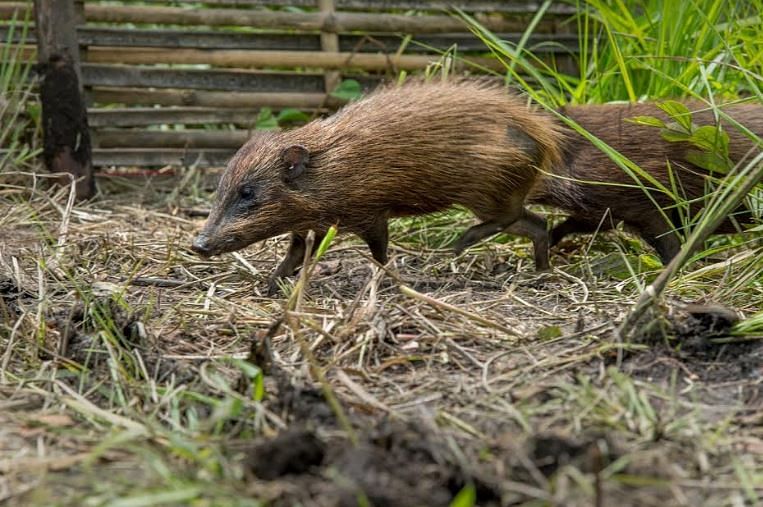
Amid the COVID-19 lockdown, wildlife conservationists in Assam released 14 captive-bred pygmy hogs in the jungles of Manas National Park, giving a boost to the conservation efforts in saving the world's smallest and rarest pig species in the wild.
The original stock of the critically endangered pigs was captured from Manas, 24 years ago for conservation breeding owing to the threat posed to the wild existence of the mammal, mainly due to increasing human activities.
"This is a significant milestone in the effort to save one of the most endangered mammals in the world through conservation breeding. The iconic species now return to their home, where the original population still survives, albeit dramatically declined. With this, the number of pygmy hogs reintroduced into the wild has reached 130 (62 males, 68 females), which is more than their current original global wild population," a statement issued by Pygmy Hog Conservation Programme (PHCP) said on Monday.
The captive-bred pygmy hogs were released in the Bhuyanapara range of Manas National Park, bordering Bhutan between May 14 and 17.
PHCP is a collaborative project involving Durrell Wildlife Conservation Trust, IUCN/SSC Wild Pig Specialist Group, Assam forest department, Ministry of Environment Forests and Climate Change, Govt of India, EcoSystems-India and Aaranyak, a biodiversity conservation group in Assam.
The captive breeding project of PHCP began using six wild hogs captured from the last surviving population of the species in Manas in 1996 and currently holds almost the entire global captive population of the species, it said.
The pygmy hog (Porcula salvania) belongs to a unique genus that has no close relative. It stands about 25 cm from the ground and weighs 6 to 9 kg. It differs from young wild boars in having a rudimentary tail (2-3 cm) and a more spindle-shaped body. It lives in small (4-8) groups that construct thatch ‘houses’ (nests) to live in, and not just to farrow like other pigs. The species was originally found in the narrow belt of tall alluvial grasslands that runs across the southern edge of the Himalayas in the Indian subcontinent.
According to wildlife conservationists, pygmy hog is an indicator species for the health of tall wet grassland habitat across the southern foothills of the Himalayas, which has seen a lot of destruction over the years.
Earlier, 35 hogs (18 M, 17 F) were released in Sonai-Rupai Wildlife Sanctuary, 59 (26 M, 33 F) in Orang National Park, and 22 (11 M, 11 F) in Barnadi Wildlife Sanctuary, all in Assam.
Parag Jyoti Deka, project director, PHCP, said, “tracking both wild and released animals is normally achieved by monitoring their nests, droppings or foraging marks and through radio telemetry.